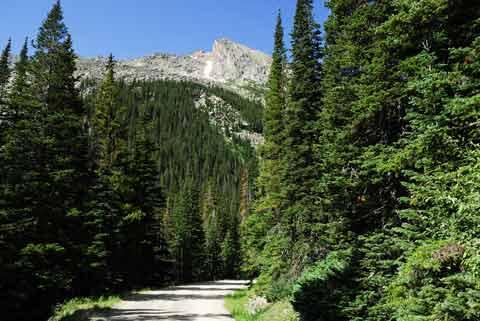There's been some discussion on this site in recent months about the need for parks to be more proactive in terms of safety and accident prevention. At least one park has done so in terms of vehicle safety, and another will try to reduce risks on the road for the July 4 weekend.
An announcement from Rocky Mountain National Park earlier this week noted,
Rocky Mountain National Park staff are preparing for the upcoming Fourth of July weekend. To help ensure a safe and enjoyable weekend for park visitors, park rangers will be increasing Law Enforcement Patrols and conducting a Sobriety Checkpoint. This is planned in conjunction with the State of Colorado’s “HEAT IS ON” program. Park rangers will be cooperating with local and state law enforcement agencies throughout the weekend.
Part of the strategy in announcing the checkpoint in advance is to try to discourage people from drinking and driving in the first place. I spent over 40 years both on-the-job and as a volunteer in emergency medical services, and after seeing far too many tragic situations resulting from drunk driving, I'm all in favor of such efforts.
Grand Teton National Park recently took a different approach to make roads in that park safer:
Park staff and personnel from the Federal Motor Carrier Safety Administration and the Wyoming Highway Patrol conducted two days of full-level commercial vehicle safety inspections on June 23rd and 24th. A complete inspection evaluates both the driver and the commercial vehicle to ensure compliance with federal regulations that govern these vehicles.
The inspections were unannounced and focused on commercial buses and trucks. A safety inspection station was assembled in Colter Bay Village, and every commercial vehicle traveling on Highway 89/287 through the park was diverted to it by rangers.
Vehicles inspected included passenger vans operated by local hotels for touring guests, commercial passenger buses, delivery vehicles, construction vehicles, and commercial vehicles carrying hazardous materials (a propane truck and a double trailer hauling gasoline). A total of 45 commercial vehicles and drivers were inspected.
Inspections focused on safety issues that could lead to motor vehicle accidents, injuries to passengers and others, and/or resource damage to the park. The inspections resulted in nine “out-of-service” violations, requiring the vehicles to be parked until identified safety issues were resolved. Three construction side-loading dump trucks were parked for mechanical failures, two vehicles (a beverage delivery truck and a 40-passenger bus) were parked for brake failure, one propane truck was parked due to an unsecured load, and a delivery truck with an underage driver was suspended from service until the driver could be replaced. Additionally, nine operators received citations for equipment or driver violations.
Getting a 40-passenger bus and a delivery truck with brake failure off the road is obviously a plus, not to mention dump trucks with mechanical failures.
Small steps for visitor safety, but certainly positive ones.




Add comment